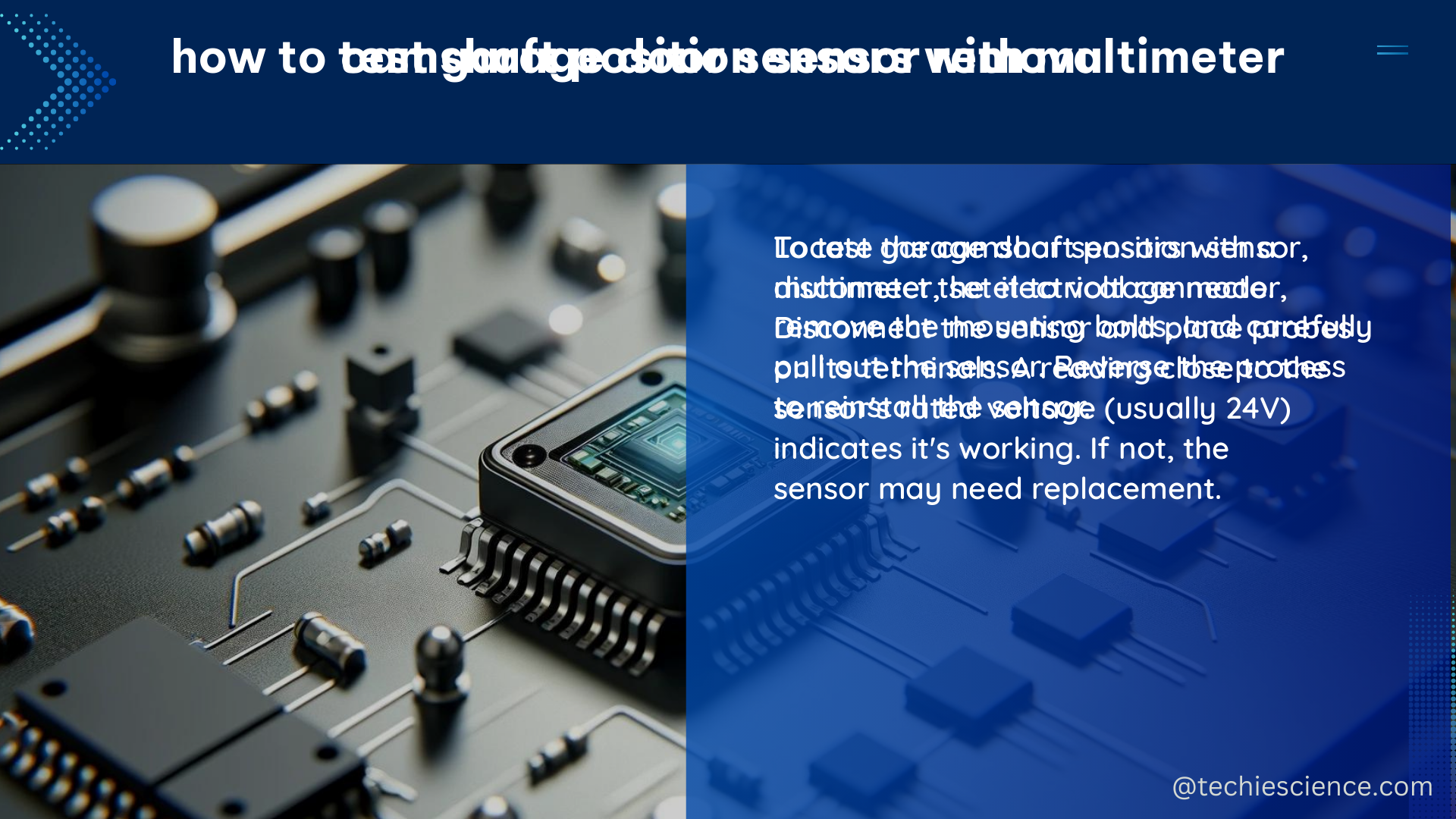The camshaft position sensor (CMP) is a critical component in the engine management system, providing vital information about the position of the camshaft to the engine control module (ECM). Proper removal and replacement of the CMP sensor is essential for maintaining optimal engine performance and avoiding costly repairs. This comprehensive guide will walk you through the step-by-step process of camshaft position sensor removal, covering essential details and providing valuable insights to ensure a successful DIY project.
Identifying the Camshaft Position Sensor Location
The CMP sensor is typically located behind the intake manifold, often secured with a single 10mm bolt. However, the exact location may vary depending on the make, model, and year of your vehicle. It’s essential to consult your vehicle’s service manual or an online repair guide to pinpoint the precise location of the CMP sensor in your specific application.
Preparing for Camshaft Position Sensor Removal

Before attempting to remove the CMP sensor, it’s crucial to take the following preparatory steps:
- Wiring Check: Carefully inspect the wiring harness connected to the CMP sensor for any signs of damage, such as pinches, burns, or loose connections. Addressing any wiring issues before removal can prevent further complications.
- Sensor Testing: If the CMP sensor appears visually undamaged but is causing issues, it’s recommended to test the sensor using a multimeter. This can help determine if the sensor is faulty and needs replacement or if the problem lies elsewhere in the system.
- Code Reading: Retrieve and interpret any engine diagnostic codes related to the CMP sensor. This information can provide valuable insights into the nature of the problem and guide your troubleshooting efforts.
Removing the Camshaft Position Sensor
- Locate the Sensor: Identify the precise location of the CMP sensor, which is typically behind the intake manifold, secured with a 10mm bolt.
- Disconnect the Wiring Harness: Carefully disconnect the wiring harness from the CMP sensor, taking note of the connector’s orientation to ensure proper reconnection during reassembly.
- Remove the Securing Bolt: Using a 10mm socket or wrench, loosen and remove the bolt securing the CMP sensor to the engine.
- Extract the Sensor: Gently pull the CMP sensor straight out of its mounting location, taking care not to damage the sensor or the surrounding components.
Disassembly Considerations
In some cases, removing the intake manifold may be necessary to access the CMP sensor. This can vary depending on the specific vehicle model and engine configuration. Consult your service manual or an experienced technician for guidance on the appropriate disassembly steps for your vehicle.
Symptoms of a Failing Camshaft Position Sensor
Recognizing the signs of a failing CMP sensor can help you identify the problem early and prevent further damage to your engine. Common symptoms include:
- Occasional backfiring or popping
- Flashing check engine light (SES)
- Hard starting or stalling
- Poor fuel economy
- Rough idling or engine misfiring
Reinstallation and Troubleshooting
When reinstalling the CMP sensor, ensure that the sensor is properly aligned and the securing bolt is tightened to the manufacturer’s specified torque. Reconnect the wiring harness, taking care to match the original orientation.
After reinstallation, clear any diagnostic codes and perform a test drive to ensure the CMP sensor is functioning correctly. If the issue persists, double-check the wiring, sensor connections, and consider further diagnostic testing to identify the root cause.
Conclusion
Removing and replacing a camshaft position sensor requires attention to detail and a methodical approach. By following the steps outlined in this comprehensive guide, you can successfully complete the task and restore your engine’s optimal performance. Remember to always consult your vehicle’s service manual, use the appropriate tools, and take safety precautions to ensure a successful DIY project.
References
- Camshaft Position Sensor Live Data and Counts When Idling
- What are the Signs of a Failing Camshaft Position Sensor?
- Camshaft Position Sensor Removal and Replacement
- Cam Position Sensor Outputs 402 Swap Problem
- Removing 05 GT Camshaft Position Sensor P0340

The lambdageeks.com Core SME Team is a group of experienced subject matter experts from diverse scientific and technical fields including Physics, Chemistry, Technology,Electronics & Electrical Engineering, Automotive, Mechanical Engineering. Our team collaborates to create high-quality, well-researched articles on a wide range of science and technology topics for the lambdageeks.com website.
All Our Senior SME are having more than 7 Years of experience in the respective fields . They are either Working Industry Professionals or assocaited With different Universities. Refer Our Authors Page to get to know About our Core SMEs.